The Need for Research into the Internet of Things (IoT)
Connecting all of our devices to the internet are creating many new opportunities and challenges for companies. Smart TVs, Refrigerators, Cars, and Watches are all applications of the Internet of Things. With millions of devices connected to the internet, companies see tremendous opportunities.
At SIS, we are conducting research into the next wave of technological and product advancements that impact our daily lives. We provide research on how consumers connect their devices and products to the Internet. We conduct in-depth research including:
Consumer Attitude, Opinion and Behavior research
Market Sizing & Opportunity research
Product design, development & testing
In-Home Usability Tests
User Experience (UX) research
Automotive research
Our work and research examine a variety of consumer applications of smart technology. Examples of our IoT market research include:
In-home Usability Testing of Smart Televisions and Household Appliances
Smart Phone Usability & Behavior research
Product research
Eye Tracking research
Mobile App testing
Smart TV Behavioral testing
Parking Sensor technology testing
Automotive Research
What is the Internet of Things?
For a little background on the Internet of Things, let’s go back to the mid-90’s. At that point in time, a young man named Kevin Ashton was working for Proctor & Gamble in London, specifically on the cosmetic line, Oil of Olay. Being naturally curious, Ashton was wondering why a specific shade of brown lipstick was continuously absent from store shelves.
At that point in history, retailers relied on bar code scanning to maintain inventory records. Longing to improve on the bar code’s capabilities, Ashton had interesting ideas that gave P&G enough incentive to encourage Ashton to look deeper into the subject.
It was about this same time that retailers in the U.K. began to embed loyalty cards with RFID chips which could transfer data wirelessly without the need for scanning. Kevin Ashton took this idea one step further, imagining products which are imbedded with this same technology. He theorized that the products themselves could inform retailers what was on their shelves and in what locations.
Because P&G, like many other prominent companies at that time, had a stake in M.I.T.’s Media Lab, Ashton’s concept ”led to meetings between P&G, Ashton and MIT, which in turn led to P&G loaning Ashton to MIT to set up the Auto-ID Center to study RFID and the potential for “smart packaging.”1
Ashton, whose name is sometimes overlooked today as a vanguard of IoT conceptualization, had this to say in 1999 about the burgeoning potential of his ideas:
“If we had computers that knew everything there was to know about things—using data they gathered without any help from us — we would be able to track and count everything, and greatly reduce waste, loss and cost. We would know when things needed replacing, repairing or recalling, and whether they were fresh or past their best. We need to empower computers with their own means of gathering information, so they can see, hear and smell the world for themselves, in all its random glory. RFID and sensor technologies enable computers to observe, identify and understand the world—without the limitations of human-entered data.”2
In the simplest terms, the Internet of Things involves the inter-connection of multiple devices to the internet. This goes beyond computers and smartphones to include things as varied as automobiles, refrigerators, and even medical devices such as heart monitors. The collection and exchange of data is enabled by sensors, software, and electronics embedded in connected devices. As the IoT continues to evolve, the amount of devices capable of connecting to it will grow exponentially. “Experts estimate that the IoT will consist of almost 50 billion objects by 2020.”3
The IoT has been referred to as the infrastructure of the information age, and this definition may be as accurate as any. By inter-connecting computers, devices, buildings, and people everywhere, the greatest hopes for IoT lie in improving the efficiency of information transfer, overall accuracy of data exchange, and lessening the need for human involvement is said processes. Imagine a future of smart homes, grids, power plants, transportation and cities. This is the promise of the IoT. Kevin Ashton’s dream is quickly becoming a modern day reality.
Potential Applications
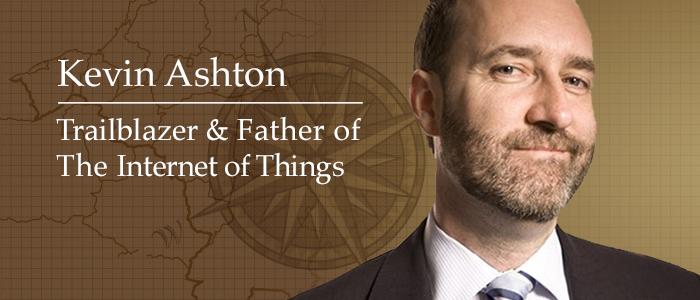
The term Internet of Things seems quite vague on the surface. What things? Isn’t everything … a thing? What exactly are these things that fall under the umbrella of the IoT?
“Things can refer to … heart monitoring implants, biochip transponders on farm animals, electric clams in coastal waters, automobiles with built-in sensors, DNA analysis devices for environmental/food/pathogen monitoring or field operation devices that assist firefighters in search and rescue operations … Current market examples include smart home devices such as the control and automation of lighting, heating, ventilation, air conditioning systems, and appliances such as washer/dryers, robotic vacuums, air purifiers, ovens or refrigerators/freezers that use Wi-Fi for remote monitoring.”4
Of course, these are just a few examples of the IoT’s dissemination into everyday life around the globe. By all indications, the IoT will play a crucial role in the development of energy management systems and the Smart Cities of the future.

Top 10 Companies Already Deeply Invested in IoT Technology and Application: 5
AMAZON
ARM
AT&T
BOSCH
CISCO
DELL
FUJITSU
GE
HP
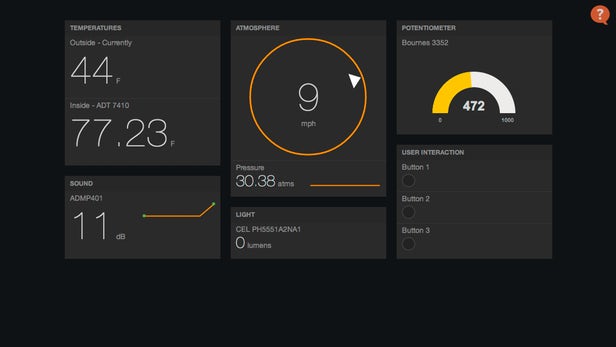
A Useful Glossary of Terms Associated with the Internet of Things (IoT):
Internet of Things: A network of internet-connected objects able to collect and exchange data using embedded sensors.
Internet of Things device: Any stand-alone internet-connected device that can be monitored and/or controlled from a remote location.
Internet of Things ecosystem: All the components that enable businesses, governments, and consumers to connect to their IoT devices, including remotes, dashboards, networks, gateways, analytics, data storage, and security.
Entity: Includes businesses, governments, and consumers.
Physical layer: The hardware that makes an IoT device, including sensors and networking gear.
Network layer: Responsible for transmitting the data collected by the physical layer to different devices.
Application layer: This includes the protocols and interfaces that devices use to identify and communicate with each other.
Remotes: Enable entities that utilize IoT devices to connect with and control them using a dashboard, such as a mobile application. They include smartphones, tablets, PCs, smartwatches, connected TVs, and nontraditional remotes.
Dashboard: Displays information about the IoT ecosystem to users and enables them to control their IoT ecosystem. It is generally housed on a remote.
Analytics: Software systems that analyze the data generated by IoT devices. The analysis can be used for a variety of scenarios, such as predictive maintenance.
Data storage: Where data from IoT devices is stored.
Networks: The internet communication layer that enables the entity to communicate with their device, and sometimes enables devices to communicate with each other.
IoT Affordability Leads to Mass Application
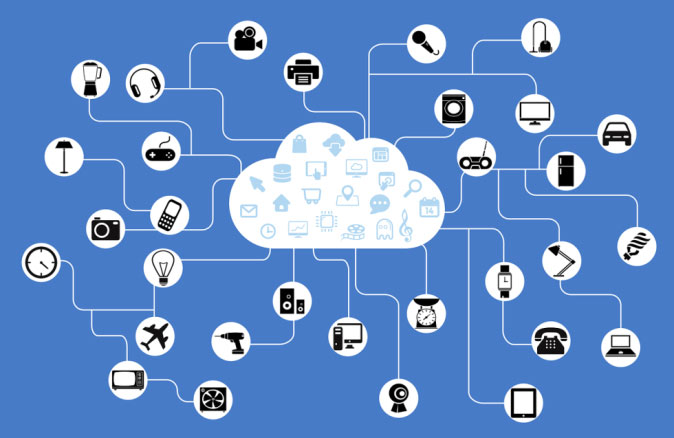
As advanced as things may presently seem, changes are fast and constant where technology is concerned. The staggering advancements of today become passé in short order as new discoveries and applications of acquired knowledge propel us toward the inevitable future and the certainty of technological evolution.
While estimates vary, current forecasts predict an earth inundated with billions of interconnected devices in the IoT in just three year’s time.
“As we approach that point, $6 billion will flow into IoT solutions, including application development, device hardware, system integration, data storage, security, and connectivity. But that will be money well spent, as those investments will generate $13 trillion by 2025.”7 Businesses, governments, and consumers will feel the benefit of these investments the most.
Almost every company in existence can benefit from the IoT in some way. GPS-enabling allows vehicles, products, and even personnel within an organization to be located and interconnected. The potential applications are myriad. Transportation companies can not only track the location of their fleets, they can, for example, control the temperature of refrigerated units remotely. Delivery companies can easily pinpoint the location of anticipated items, easing consumer concerns about arrival times. “Sensors can also measuring items, such as driving behavior and speed, to reduce fuel expense and wear and tear on consumables.”8
The IoT will revolutionize hospital procedures, allowing healthcare personnel to locate needed equipment in a moment’s notice, find staff members easily, and monitor the condition of equipment continuously. Again, remote operation of equipment allows doctors, nurses, surgeons and other health professionals to treat and monitor patients off-site, leading to improved access to the best possible care.
Consumers will exploit the IoT in countless useful ways, leading to a not so distant day when entire households are interconnected and inter-operative. Cooking, cleaning, laundry, scheduling, lighting … it’s difficult to imagine scenarios where the IoT would not be involved. And when a device, implement, or vehicle is in need or service, in-home smartmeters will notify the owner and even schedule maintenance.
The IoT is the Future
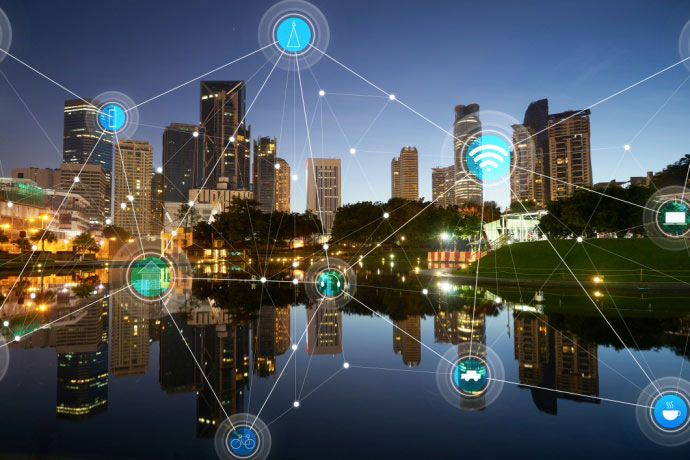
Not long ago, actualizing a concept like the IoT was just plain too expensive. Today, telecommunications have become more far-reaching and efficient, and the internet is available and accessible practically everywhere. Most importantly, it is now far less expensive than it once was to manufacture sensors with onboard wi-fi. Thusly, connecting all the world’s devices is also cheaper.
Look back not so long ago and who could have foreseen the exploding popularity of smartphone technology? “Smart phone usage has surpassed all the predicted limits and telecommunication sector is already working on its toes to keep their customers satisfied by improving their infrastructure. As IoT devices need no separate communication than the existing one building IoT tech is very cheap and highly achievable.”9
The Downside of the IoT
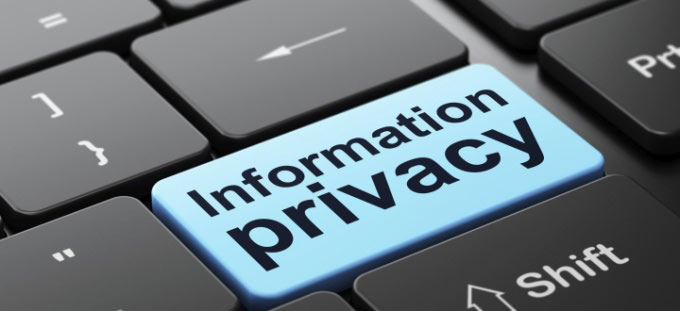
For all of the wonderful potential of the IoT, there are concerns about its broader implications of a few important fronts. One of these is employment. It’s not hard to imagine why lots of jobs will be lost when sensors and machines and devices can do the work once done by trained professionals.
“A report published last week by consulting firm Zinnov claims that IoT will impact a staggering 120,000 jobs in India by 2021, although up to 94,000 redundancies could be made.
Meanwhile, only 25,000 jobs will be created within the next few years. The main cause of this will be increased automation, whereby humans are replaced by technologies capable of handling the same job.”10
As with India, similar job-loss fears exist in the US and elsewhere globally. In the words of a thousand science fiction movies, “Resistance is futile.” So what can be done? It’s the big question facing society as a whole. Old reliable jobs are not coming back. Training for the oft-mentioned jobs of the future is non-existent or lagging. The IoT promises to exacerbate problems already initiated by rampant automation. It will be up to mankind-at-large to reinvent, adapt, and push forward into this uncertain future. There is no turning back.
On the upside, companies will need IoT experts to aid them in incorporating emerging technology and in maximizing their investments. They will also require data analysts in order to best exploit all the new information available to them. These will be highly skilled positions which will require a trained and ready workforce.
Job Losses, Lack of Privacy, Addiction to Technology
With the prevalence of hackers today, whose skill level always seems to run parallel with the advancement of technology, we can expect the IoT to be prime territory for illegal hacking activity, even potential terrorism. After all, information is money, and if government computers can be so easily hacked, it stands to reason that our own computers are easy targets for would be data thieves.
“The privacy issues also lead to the question of who will control the Internet of Things? If there is only one company, that could potentially lead to a monopoly hurting consumers and other companies. If there are multiple companies that are given access to the information acquired, doesn’t that breach consumers privacy? Also, where is the information going to be stored?”11
For a baby-boomer, it might be hard to comprehend a younger generation that has little familiarity with old-school telephones, or going to the library to look up information. As with most technological advancements, the internet age has been both a boon and a curse. Moderation being the key to healthy interaction, many people are able to balance time spent online with time spent away from it.
However, for those who wander down endless rabbit-holes of information, or remain glued to their little phone screens as the glorious sunrises and sunsets of their lives pass them by, unhealthy reliance on technology can be destructive, not only to individuals, but to the larger fabric of society as a whole. “Depending on the amount that an individual relies on the information
supplied could be detrimental if the system collapses. The more we entrust and the more dependent we are on the Internet could lead to a potentially catastrophic event if it crashes.”12
Beyond the Internet of Things
“We’re headed into one of those historic discontinuities where society changes.”
One thing is certain, technological advancement never ceases. Before we have grown accustomed to changes, other changes take place and once again we must adapt. So it is with the IoT as visionaries such as Adam Bosworth work to push world inter-connectivity even further. The term Bosworth favors is data singularity.
“I’m interested in affecting five billion people,” said Mr. Bosworth, a former star at Microsoft and Google who now makes interactive software at Salesforce.com, an online software company that runs sales for thousands of corporations. “We’re headed into one of those historic discontinuities where society changes.”13
Bosworth envisions are world even more wirelessly connected where literally everything imaginable is fitted with sensors. Not just products and personnel, but everyday things like doors, car parts, dams, and more. Large companies like GE and IBM are already at the forefront of this emerging technological vision, imagining billions of sensors and devices wirelessly communicating with remote data centers and countless servers which collect, analyze, and process all the incoming information.
In response, the triggered servers issue directives to these sensors and devices, causing them to react in ways beneficial to consumers, companies, and communities. Bosworth imagines heating units which anticipate incoming cold weather, insurance companies that can instantly respond to accident claims because the vehicles themselves have relayed the pertinent information about accidents. Or, streetlights and traffic signals which automatically adjust to traffic volume.
In this not too distant environment, devices will accrue information, analyze and react to it, in a matter of mere moments. This data singularity will improve far more than simple efficiency. They will see the very products they purchase improving themselves in reaction to the consumers tastes, habits, and lifestyle. It’s already happening with smartphones, some more sophisticated automobiles, and with entertainment systems.
“Analysts foresee a scramble to own and manage these systems and their data, and ever more power accruing to just a few companies like Google, Amazon and Microsoft, which already have the global computing systems and reach to make it happen.”14
At SIS International Research, we recognize the world-altering significance of the Internet of Things. We, too, are experts in tracking consumer behavior, and in turning that information into actionable recommendations. Like you, we are utilizing this exciting new technology to expand our view of the business landscape around the globe and to use the bounty of incoming information to better serve our valued clients.
Together, we can harness the power of the Internet of Things to best evaluate your IoT market research needs, initiate competitive intelligence efforts, and best position your business to move forward profitably and confidently in this new and challenging era.
SIS International Research is a leading global Market Research & Market Intelligence firm providing comprehensive research services and strategic analysis of information. We have served many of the world’s largest and most influential companies, serving over 70% of the Fortune 500. Founded in 1984, we offer many other innovative products and services for our client’s decision-making. Our company conducts IoT Market Research, Business Intelligence and Competitive Intelligence for over 50 industries in over 120 countries. Only SIS International (formerly Strategic Intelligence Systems) has the expertise, global resources, thought leadership and Integrated Research for full-market insights into the entire market landscape. With our Integrated Research and Intelligence, our clients gain advantage from comprehensive insight for decision-making. For 25 years, SIS International Research has conducted research projects in over 120 countries and continues to expand its coverage.
SIS International Research – 11 E 22nd St. (2nd Floor) – New York, New York – 10010 – 212 505 6805



